Your cart is currently empty!
Tag: Procedure
SayPro is a Global Solutions Provider working with Individuals, Governments, Corporate Businesses, Municipalities, International Institutions. SayPro works across various Industries, Sectors providing wide range of solutions.
Email: info@saypro.online Call/WhatsApp: Use Chat Button 👇

-
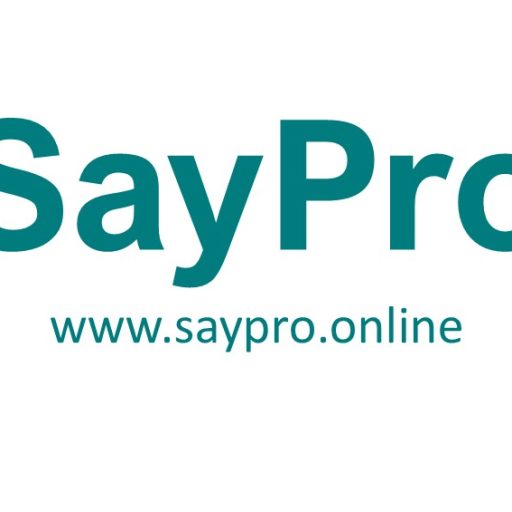
SayPro Human Capital Time Management Procedure SayProP550
Document Code: SayProP550
Approved By: Neftaly Malatjie, Chief Executive Officer
Date Approved: 22 June 2025
Next Review Date: 22 December 2025
Policy Owner: SayPro Chief Human Capital Officer SayProCHCR- Purpose
This procedure outlines the principles, responsibilities, and mechanisms for effective time management among SayPro Human Capital. It ensures that all members of SayPro make optimal use of working hours, prioritize duties effectively, and meet deadlines in line with SayPro’s productivity, professionalism, and accountability standards. - Scope
This procedure applies to:
- All SayPro Human Capital (full-time, part-time, contract, and interns)
- All departments, Royal Divisions, and project teams
- Supervisors, Officers, Royal Directors, and Executive Leadership
- Objectives
- Promote a high-performance culture by improving time management skills
- Reduce inefficiencies, delays, and time wastage in day-to-day operations
- Standardize work schedules, reporting, and productivity monitoring
- Equip Human Capital with tools and systems to manage time responsibly
- Definitions
- Time Management: The process of organizing and planning how to divide one’s time between tasks to increase efficiency and productivity
- Royal Director: Senior leader responsible for ensuring team compliance with time policies
- Officer: Mid-level Human Capital responsible for day-to-day monitoring of staff attendance and outputs
- Attendance Register: The official daily record of working hours (manual or digital)
- Working Hours and Attendance
5.1 Standard Working Hours
- Monday to Friday: 08h00 to 17h00 (with a 1-hour lunch break)
- Saturdays (where applicable): 08h00 to 13h00
- Remote/hybrid teams must follow a documented agreement approved by the Royal Director
5.2 Breaks
- Morning break: 15 minutes (between 10h00 and 10h30)
- Lunch: 1 hour (between 12h30 and 14h00)
- Afternoon break: 15 minutes (between 15h00 and 15h30)
5.3 Attendance Monitoring
- SayPro Human Capital must sign in and out daily via the Attendance Register (SayProF550-01) or biometric system
- Any absence or late arrival must be reported to the Officer within 30 minutes of the expected start time
- Time Planning and Productivity
6.1 Weekly Planning
- All Human Capital must submit a Weekly Work Plan (SayProF550-02) every Monday morning
- Officers and Royal Directors must review and approve plans
6.2 Daily Task Allocation
- Use SayPro Task Allocation Template (SayProF550-03) to assign and track responsibilities
- Time-sensitive tasks must be prioritized using the SayPro Urgency Matrix
6.3 Time Tracking Tools
- SayPro recommends use of approved digital tools (e.g., Trello, Google Calendar, SayPro Portal)
- Manual logs are allowed only with Royal Director’s written permission
- Meetings and Scheduling
- All internal meetings must follow the SayPro Meeting Schedule Protocol (SayProP034)
- Meetings must have a fixed start and end time, agenda (SayProF550-04), and follow-up actions
- No meeting should exceed 90 minutes without CEO or CHCO approval
- Deadlines and Accountability
- Project and task deadlines must be logged in the Task Register
- Missed deadlines must be reported in the Weekly Report (SayProF550-05) with reasons and revised action plan
- Repeated delays or chronic time mismanagement may result in formal disciplinary action (refer to SayProP045)
- Training and Capacity Building
- All Human Capital must attend annual Time Management and Productivity Training
- Royal Directors may request additional workshops for their teams
- Training records must be submitted using SayPro Training Attendance Form (SayProF550-06)
- Roles and Responsibilities
Chief Human Capital Officer (CHCO):
- Ensures institutional time management compliance
- Approves high-level corrective actions and training programmes
Royal Directors:
- Monitor team attendance, work plans, and punctuality
- Authorise exceptions or remote time arrangements
SayPro Officers:
- Review daily and weekly submissions
- Report irregularities and support performance coaching
SayPro Human Capital (All Staff):
- Submit required reports and manage time responsibly
- Maintain punctuality and observe breaks as scheduled
- Tools, Forms and Templates
- SayPro Attendance Register – SayProF550-01
- SayPro Weekly Work Plan Template – SayProF550-02
- SayPro Task Allocation Sheet – SayProF550-03
- SayPro Meeting Agenda Template – SayProF550-04
- SayPro Weekly Productivity Report – SayProF550-05
- SayPro Training Attendance Register – SayProF550-06
- Monitoring and Evaluation
- CHCO submits quarterly Time Efficiency Report to SayPro Executive Committee
- Internal audits may be conducted by the SayPro Governance Unit
- Any discrepancies in time reporting or productivity must be flagged within 48 hours
- Compliance and Disciplinary Measures
- Failure to comply with this procedure may result in:
• Written warning
• Performance improvement plan
• Disciplinary hearing (per SayProP045)
- Frequently Asked Questions (FAQs)
Q1: Can I work flexible hours?
A: Only with written permission from the Royal Director and Officer, and it must not compromise deliverables.Q2: What happens if I am consistently late?
A: Repeated lateness may lead to a formal warning and time management training.Q3: How is productivity measured?
A: Based on submitted plans, actual task completions, time spent, quality of work, and adherence to deadlines.Q4: Can I work from home?
A: Yes, if you have a Remote Work Agreement approved and monitored via SayPro systems.- Review and Amendment
- This procedure will be reviewed every six (6) months by the SayPro Governance Team and updated as needed.
Approved By:
Neftaly Malatjie
Chief Executive Officer, SayPro - Purpose
-

SayPro Human Capital Probation Management Procedure SayProP537
Document Code: SayProP537
Approved By: Neftaly Malatjie, Chief Executive Officer
Date Approved: 22 June 2025
Next Review Date: 22 December 2025Policy Owner: SayPro Chief Human Capital Officer SayProCHCR
- Purpose
This procedure establishes the standards and expectations for the management of probation periods for newly appointed SayPro Human Capital. It ensures consistency, transparency, and accountability in evaluating the suitability and performance of individuals during their initial period of engagement. - Scope
This procedure applies to:
- All newly appointed SayPro Human Capital (permanent, contract, or intern)
- Royal Directors, Officers, and Team Leads responsible for managing Human Capital
- SayPro Royal HR/HC Division and Governance & Compliance units
- Objectives
- Provide clear guidance on the duration, supervision, and evaluation of probation periods
- Promote performance-based confirmation and professional development
- Address unsatisfactory performance fairly and promptly
- Align probation processes with SayPro Human Capital Policies and Procedures
- Definitions
- Probation: A defined period (typically 3–6 months) where a new Human Capital’s suitability for a role is assessed
- Probation Officer: The SayPro Officer assigned to supervise and evaluate the individual during probation
- Confirmation: The formal acceptance of a Human Capital member into a permanent or extended appointment after successful probation
- Probation Period Overview
- Standard probation is three (3) months unless otherwise stated in the appointment letter
- May be extended by an additional three (3) months with approval from the CHCO and Royal Director
- All probationers must undergo performance assessments and training as per their roles
- Roles and Responsibilities
6.1 Chief Human Capital Officer (CHCO)
- Oversees the implementation of the probation procedure
- Approves extensions, terminations, or confirmations of Human Capital probation
6.2 Royal Director / Team Lead
- Assigns Probation Officer and ensures induction is completed
- Reviews monthly performance reports and provides feedback
6.3 Probation Officer
- Conducts regular check-ins, provides coaching, and monitors progress
- Completes performance assessments using SayPro Probation Evaluation Form (SayProF537-02)
6.4 Human Capital (Probationer)
- Completes assigned tasks, attends induction, and demonstrates alignment with SayPro values and standards
- Participates in review meetings and completes self-assessment forms (SayProF537-03)
- Probation Process
Step 1: Onboarding & Induction
- Issue Probation Appointment Letter (SayProF537-01)
- Assign Probation Officer
- Conduct onboarding and provide job description, KPIs, and training schedule
Step 2: Monthly Review Meetings
- Monthly meetings between Probation Officer and probationer
- Use SayProF537-02 for documentation
- Identify strengths, concerns, and action steps
Step 3: Final Evaluation
- At the end of the probation period, Probation Officer submits final evaluation report
- Human Capital completes SayProF537-03 Self-Review
- Royal Director and CHCO jointly decide on one of the following:
▪ Confirmation
▪ Extension of probation
▪ Termination of appointment
Step 4: Outcome Documentation
- Issue Confirmation Letter or Probation Extension Letter (SayProF537-04)
- If termination, follow SayPro Disciplinary/Exit Procedure (SayProP045)
- File all documents in the personnel record
- Forms and Templates
- SayPro Probation Appointment Letter – SayProF537-01
- SayPro Probation Monthly Evaluation Form – SayProF537-02
- SayPro Self-Assessment Form (Probationer) – SayProF537-03
- SayPro Confirmation/Extension/Termination Letter – SayProF537-04
- Compliance
- Failure to complete evaluations or follow procedures may lead to delays in confirmation
- Managers not fulfilling probation supervision responsibilities may be subject to corrective action
- Human Capital on probation must not be granted permanent privileges until confirmation
- Monitoring and Review
- CHCO maintains a register of all active probationers
- Quarterly reports are submitted to the Governance Committee for oversight
- Procedure reviewed bi-annually
- FAQs
Q1: Can a probationer apply for internal transfers?
A: No. Transfers are not permitted during the probation period unless exceptional circumstances exist and CHCO approves.Q2: Can probation be waived?
A: Only by written exemption from the CEO upon Royal Committee recommendation.Q3: Are probationers eligible for benefits?
A: They are eligible for limited benefits as outlined in their appointment letter or relevant policy.Q4: What happens if the probationer goes on extended leave?
A: Probation will be suspended and resume upon their return.Approved By:
Neftaly Malatjie
Chief Executive Officer, SayPro - Purpose
-

SayPro Human Capital School Management Procedure SayProP540
Document Code: SayProP540
Approved By: Neftaly Malatjie, Chief Executive Officer
Last Reviewed: 22 June 2025
Next Review Date: 22 December 2025Policy Owner: SayPro Chancellor, SayProSCHAR
- Purpose
The purpose of this procedure is to outline the governance, operational, academic, and human capital management framework for all educational institutions or school-based initiatives managed by SayPro. This procedure ensures quality delivery, accountability, compliance, and alignment with SayPro’s mission to empower youth through education. - Scope
This procedure applies to:
- All SayPro-managed or affiliated schools, academies, and learning centres
- SayPro Human Capital assigned to academic, operational, and administrative roles
- Learners, parents/guardians, and community stakeholders
- External regulatory bodies and education partners working with SayPro
- Objectives
- Establish a standardized management structure for SayPro schools
- Ensure alignment with national education standards and SayPro policies
- Promote safe, inclusive, and effective learning environments
- Define clear roles, responsibilities, and procedures for academic delivery and learner management
- Support continuous development of SayPro Human Capital and educators
- Definitions
- School: Any physical or virtual educational centre managed by SayPro
- Royal School Director: SayPro Human Capital responsible for overall school governance
- School Officer: SayPro-appointed leader managing daily academic operations
- Learner: A registered participant in SayPro educational programmes
- SAYQ: SayPro Academic Yearly Qualification framework
- Governance and Leadership Structure
5.1 Royal School Director
- Oversees strategic planning, regulatory compliance, and budget approval
- Reports to the SayPro Chief Human Capital Officer and SayPro CEO
5.2 School Officer (Principal/Manager)
- Manages staff performance, learner discipline, and operational systems
- Implements SayProP540 policies and submits reports monthly
5.3 Academic Team Leads
- Develop lesson plans, conduct assessments, and deliver instruction
- Mentor learners and manage academic resources
5.4 Administrative Officers
- Handle school enrollment, data management, finances, and compliance records
5.5 Learner Affairs Coordinator
- Manages learner welfare, extracurriculars, and parental communication
- School Management Processes
6.1 School Registration & Accreditation
- All SayPro schools must be registered with the appropriate education authority
- Compliance documents must be maintained and reviewed annually
6.2 Human Capital Recruitment & Vetting
- Educators and school staff must undergo background checks and reference verification
- Use SayPro Education Qualification Verification Procedure (SayProP567)
6.3 Learner Enrollment Process
- Parents/guardians submit application forms (SayProF540-01)
- Applications reviewed by the School Officer and admissions team
- Orientation conducted prior to term commencement
6.4 Curriculum Development
- Curriculum must meet national standards and include SAYQ-aligned modules
- Supplementary SayPro training modules (entrepreneurship, life skills, technology) are mandatory
6.5 Academic Assessment & Reporting
- Use SayPro Assessment Tools (SayProF540-03) for termly evaluations
- Report cards issued quarterly; academic reports filed and reviewed
6.6 Disciplinary Process
- All cases handled in accordance with SayPro Code of Conduct (SayProP108)
- Disciplinary Hearings chaired by the School Officer with a Royal Director present
6.7 Health, Safety & OHS
- Regular inspections conducted following SayPro OHS Procedure (SayProP001)
- Health screenings and safety drills performed quarterly
6.8 Communication & Community Engagement
- Monthly newsletters issued to parents (SayProF540-05 template)
- Community stakeholder meetings held at the end of each term
- Forms and Templates
- SayPro Learner Application & Enrollment Form – SayProF540-01
- SayPro Staff Assignment & Responsibility Matrix – SayProF540-02
- SayPro Learner Assessment Record – SayProF540-03
- SayPro Incident/Disciplinary Report Form – SayProF540-04
- SayPro Parent Communication Template – SayProF540-05
- SayPro School Performance Monthly Report – SayProF540-06
- Monitoring, Evaluation & Compliance
- Monthly internal audits conducted by SayPro Governance Unit
- Termly academic performance reviews against SAYQ benchmarks
- Annual compliance audit with education regulatory body
- Staff performance evaluations done bi-annually
- Roles & Responsibility Matrix
Role Core Duties Royal School Director Strategic oversight, policy enforcement School Officer Academic leadership, compliance, school reporting Academic Team Lead Curriculum delivery, assessments, mentorship Administrative Officer Recordkeeping, finance, scheduling Learner Affairs Officer Welfare, communication, extra-curricular coordination - FAQs
Q1: Who approves new school projects within SayPro?
A: The SayPro CEO and Royal Committee based on recommendations from CHCO.Q2: Are parents involved in SayPro schools?
A: Yes. They participate through school meetings, feedback forms, and volunteer committees.Q3: Can SayPro offer online schooling?
A: Yes, through SayPro’s Digital Learning Platform. All procedures apply equally.Q4: What languages are used in instruction?
A: English is the primary language; additional languages may be added based on regional needs.Q5: Are SayPro schools fee-based?
A: Schools may be tuition-free, low-fee, or donor-sponsored depending on the location and funding model.- Compliance and Disciplinary Measures
- Non-compliance by staff or learners will result in disciplinary hearings and possible dismissal or expulsion
- Schools not meeting SayPro standards may be subject to leadership change or closure
- Annual training on SayProP540 is mandatory for all school staff
Approved By:
Neftaly Malatjie
Chief Executive Officer, SayPro - Purpose
-

SayPro Human Capital CIPC Management Procedure SayProP578
SayPro Human Capital CIPC Management Procedure
Document Code: SayProP578
Approved By: Neftaly Malatjie, Chief Executive Officer
Last Reviewed: [Insert Date]
Next Review Date: [Insert Date, 6 months from today]Policy Owner: SayPro Chief Human Capital Officer
1. Purpose
The purpose of this procedure is to ensure the effective management, compliance, and timely submission of all SayPro-related documentation to the Companies and Intellectual Property Commission (CIPC), in alignment with legal and regulatory requirements.
2. Scope
This procedure applies to all SayPro Human Capital activities related to the registration, updating, and management of companies, directors, amendments, and annual returns submitted to CIPC.
3. Definitions
Term Definition CIPC Companies and Intellectual Property Commission – South Africa’s regulatory body for company registration and IP. Annual Returns Mandatory filings submitted to CIPC reflecting the status of the company. Royal Director SayPro senior officer responsible for overseeing company compliance. Officers Human Capital officials managing internal records and submissions to CIPC.
4. Objectives
- To maintain full legal compliance with CIPC regulations
- To ensure accuracy of SayPro registration, ownership, and operational data
- To keep all SayPro entities in good standing with the regulator
- To support SayPro’s transparency, accountability, and governance commitments
5. Roles and Responsibilities
Role Responsibilities Chief Executive Officer Approves all CIPC filings and strategic decisions Royal Director: Compliance Coordinates all CIPC-related actions, monitors deadlines SayPro Legal/Finance Officers Prepares, verifies, and files CIPC forms and ensures documentation integrity SayPro Officers Maintain up-to-date internal records that inform CIPC submissions
6. Procedure
6.1 Company Registration
- Submit all new company registrations via the CIPC e-services platform
- Assign a Royal Director to oversee compliance of each legal entity
- Capture entity on SayPro internal registry
6.2 Director Amendments
- Submit changes to directors’ details (resignations, appointments) via CIPC
- Update internal records immediately after confirmation of change
- Archive certified ID copies and resolutions
6.3 Annual Returns
- Track and diarise return submission deadlines (annually within 30 days of incorporation anniversary)
- Confirm financial statements and turnover thresholds
- Submit annual return and pay prescribed fees
6.4 Name Changes and Amendments
- Submit name reservation applications with up to 4 preferred names
- Upon approval, lodge company amendment forms
- Notify all stakeholders and update websites, stationery, and digital assets
6.5 Deregistration and Restoration
- Apply for deregistration where operations cease, with supporting documents
- Where required, lodge restoration with reasons and updated financials
7. Templates and Tools
- CIPC Submission Checklist
- Director Change Form Template
- Name Reservation Request Form
- Annual Return Tracker
- Compliance Audit Sheet
- Internal Company Register
8. Compliance
SayPro ensures strict compliance with the following legislation:
- Companies Act No. 71 of 2008 (as amended)
- CIPC Rules and eServices Guidelines
- SayPro Governance and Ethics Policies
- National Treasury and Donor Reporting Requirements
Failure to comply may lead to deregistration, fines, or reputational damage.
9. Frequently Asked Questions (FAQs)
Q1: How do I know when SayPro must submit an annual return?
A1: Annual returns must be filed within 30 business days of the anniversary of each entity’s registration.Q2: Who handles SayPro’s CIPC submissions?
A2: SayPro Legal or Finance Officers under the guidance of a Royal Director.Q3: What happens if SayPro misses a submission deadline?
A3: CIPC may impose penalties or deregister the entity.Q4: Can we change company details like address or directors online?
A4: Yes. CIPC eServices allows for most company detail updates and requires supporting documentation.Q5: Where are SayPro CIPC records kept?
A5: All records are digitally stored in SayPro’s secured document management system and backed up regularly.
-

SayPro Human Capital BEE Management Procedure SayProP579
SayPro Human Capital BEE Management Procedure
Document Code: SayProP579
Approved By: Neftaly Malatjie, Chief Executive Officer
Last Reviewed: [Insert Date]
Next Review Date: [Insert Date, 6 months from today]Policy Owner: SayPro Chief Human Capital Officer
1. Purpose
The purpose of this procedure is to ensure SayPro’s compliance with the Broad-Based Black Economic Empowerment (B-BBEE) Act, its Codes of Good Practice, and all relevant transformation charters through structured Human Capital practices that promote inclusion, equity, and empowerment.
2. Scope
This procedure applies to all SayPro Human Capital units, operations, partnerships, recruitment activities, skills development, enterprise and supplier development, and social investment initiatives.
3. Definitions
Term Definition B-BBEE Broad-Based Black Economic Empowerment: Government policy to advance economic transformation. Skills Development Training and development of black employees and unemployed persons. Enterprise Development Support for black-owned businesses through funding or services. Royal Director SayPro Executive responsible for BEE oversight and compliance.
4. Objectives
- To maintain and improve SayPro’s BEE level and compliance scorecard
- To align all human capital functions with transformation goals
- To ensure inclusive representation and empowerment in all SayPro activities
- To contribute to the socio-economic upliftment of historically disadvantaged communities
5. Roles and Responsibilities
Role Responsibilities Chief Executive Officer Strategic leadership and final approval of all BEE initiatives Royal Directors Oversight, monitoring, and reporting on BEE components within their units Human Capital Officers Implementation of recruitment, training, and supplier development strategies Finance Officers Ensure proper funding and investment in BEE initiatives Project Teams Document and report contributions towards BEE goals in their activities
6. Procedure
6.1 BEE Strategy Development
- Define SayPro’s BEE vision and annual targets
- Conduct internal audits and gap analysis
- Align strategy with current BEE Codes and sector-specific charters
6.2 Recruitment and Employment Equity
- Prioritise employment of black candidates, youth, women, and persons with disabilities
- Maintain and submit Employment Equity Reports as required
- Promote internal career progression for historically disadvantaged individuals
6.3 Skills Development
- Register black learners for accredited SayPro courses, internships, and learnerships
- Partner with SETAs and funders for training and upskilling
- Maintain attendance and completion records to support BEE verification
6.4 Enterprise and Supplier Development
- Source and support black-owned vendors through SayPro Marketplace
- Provide mentorship, training, and business development support
- Monitor and record procurement from B-BBEE-compliant suppliers
6.5 Socio-Economic Development
- Invest in SayPro community-based projects aligned with social upliftment
- Track all donations, volunteer hours, and CSI impact using templates
- Showcase impact through SayPro reports, events, and media
7. Templates and Tools
- BEE Audit Checklist
- Supplier Compliance Declaration
- Employment Equity Reporting Template
- Skills Development Tracking Sheet
- Enterprise Development Support Form
- Socio-Economic Development Impact Log
8. Compliance
SayPro adheres to the following frameworks:
- Broad-Based Black Economic Empowerment Act No. 53 of 2003
- B-BBEE Codes of Good Practice
- Sector-specific Transformation Charters
- POPIA, Labour Laws, and SayPro’s Ethical Code of Conduct
Non-compliance may result in legal penalties, funding loss, reputational risk, or disciplinary action.
9. Frequently Asked Questions (FAQs)
Q1: What BEE level is SayPro aiming for?
A1: SayPro targets Level 1 or 2 status depending on annual assessments and partner requirements.Q2: Does BEE only apply to hiring?
A2: No, it covers recruitment, training, supplier relations, and community investments.Q3: How does SayPro track BEE progress?
A3: Through BEE audits, templates, internal reports, and third-party verifications.Q4: Can SayPro support external black-owned businesses?
A4: Yes, via SayPro Marketplace, funding, mentorship, and enterprise development programmes.Q5: Who is responsible for BEE compliance?
A5: All Officers contribute, under the oversight of Royal Directors and final approval by the CEO.
-
SayPro Human Capital WIL Management Procedure SayProP576
SayPro Human Capital Work Integrated Learning (WIL) Management Procedure
Document Code: SayProP576
Approved By: Neftaly Malatjie, Chief Executive Officer
Last Reviewed: [Insert Date]
Next Review Date: [Insert Date, 6 months from today]
1. SayPro CEO Neftaly Malatjie Speech on the Purpose of SayPro WIL Management Procedure SayProP576
The purpose of this procedure is to outline the management, coordination, and oversight of Work Integrated Learning (WIL) at SayPro. This ensures that students and participants placed under SayPro’s programs receive high-quality experiential learning aligned with academic outcomes and professional standards.
2. Scope
This procedure applies to:
- SayPro WIL placements under TVET Colleges, Universities, and Training Institutions
- Internal SayPro departments, Officers, and Human Capital hosting WIL participants
- WIL Coordinators and academic partners
- Participants undergoing experiential learning, internships, or placements
3. Definitions
- WIL (Work Integrated Learning): A structured academic program that integrates theory with practical work experience.
- Host Department: SayPro Royal department that provides a workplace for a WIL participant.
- WIL Coordinator: Officer responsible for facilitating, monitoring, and reporting on WIL activities.
- Mentor: SayPro Officer or Royal Director assigned to supervise the WIL participant.
4. Objectives
- Facilitate structured learning through practical workplace exposure.
- Align WIL activities with academic curriculum and SayPro operational standards.
- Support youth employability, workplace readiness, and professional growth.
- Maintain compliance with institutional, SETA, and national skills regulations.
5. Roles and Responsibilities
Role Responsibilities Chief Executive Officer Approves partnerships, host agreements, and WIL policies. Royal Directors Allocate space, mentors, and tasks for WIL learners within their departments. WIL Coordinators Facilitate applications, reporting, monitoring, and liaison with academic institutions. Mentors/Officers Provide on-the-job guidance, performance evaluation, and feedback. Human Capital Ensure enrolment, documentation, contracts, and attendance tracking.
SayProP576-6. Procedure
SayProP576-6-1 Application, Adverts and Onboarding
- SayProP576-6-1-1 Receive WIL request from student or institution.
- SayProP576-6-1-2 Verify academic eligibility and duration of placement.
- SayProP576-6-1-3 Complete and sign the SayPro WIL Agreement Form.
- SayProP576-6-1-4 Register participant in SayPro Human Capital systems.
- SayProP576-6-1-5 Assign a host department and mentor.
- SayProP576-6-1-6 SayPro WIL Adverts as per below

SayProP576-1-6-1 SayPro Chief Marketing Royal
- SayProP576-6-1-6-1List the TVET and University WIL Positions with the Link to the Advert as per SayPro000-5
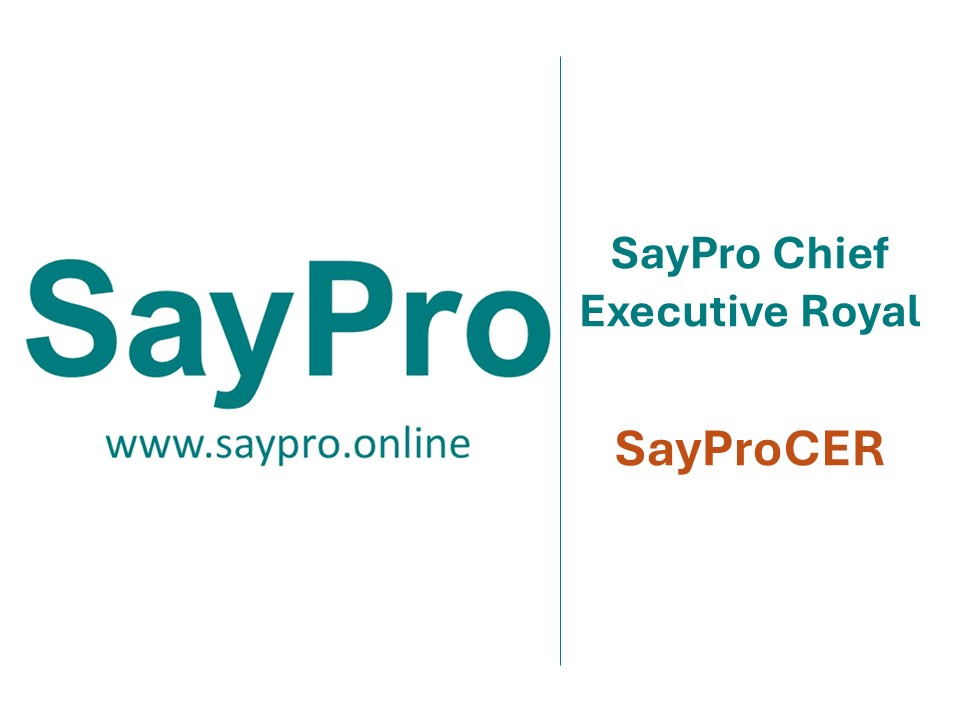
SayProP576-1-6-2 SayPro Chief Executive Royal
- List the TVET and University WIL Positions with the Link to the Advert as per SayPro000-5
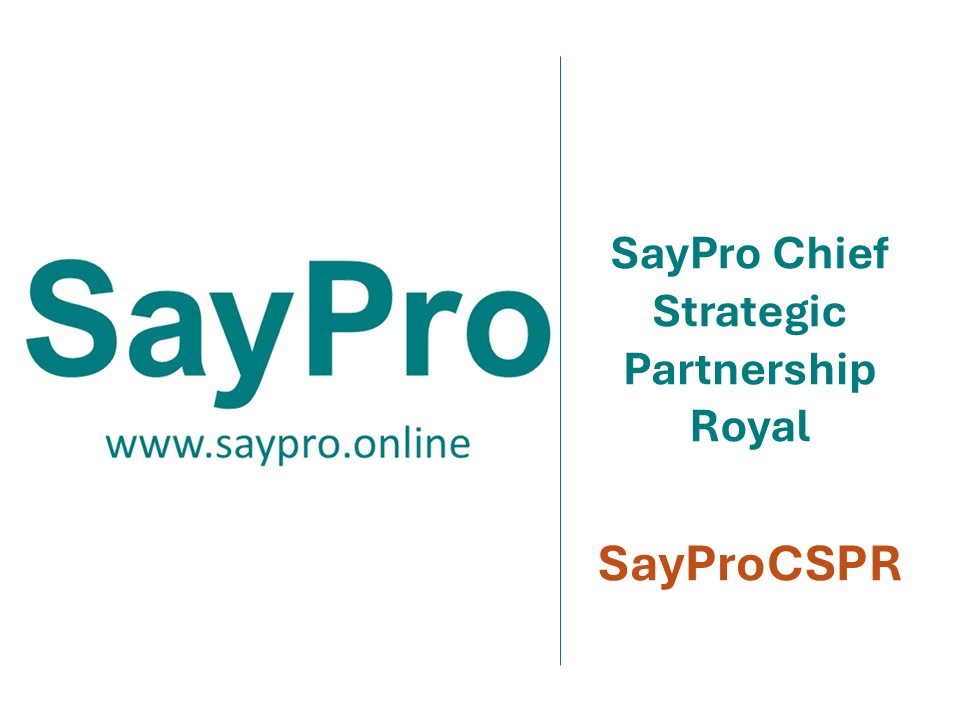
SayProP576-1-6-3 SayPro Chief Strategic Partnership Royal
- List the TVET and University WIL Positions with the Link to the Advert as per SayPro000-5
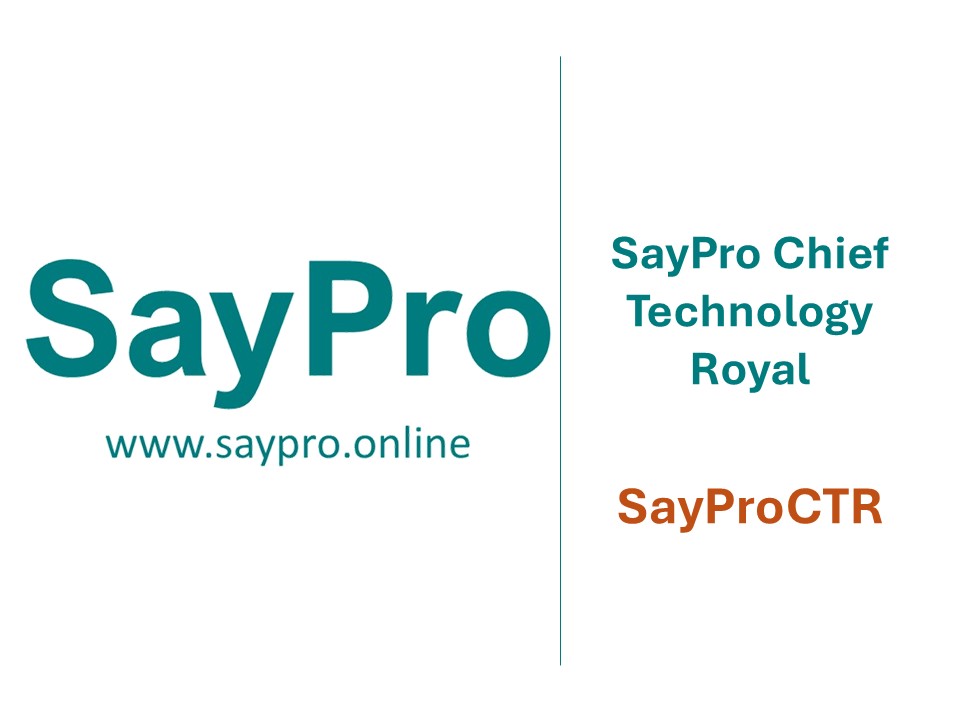
SayProP576-1-6-4 SayPro Chief Technology Royal
- List the TVET and University WIL Positions with the Link to the Advert as per SayPro000-5
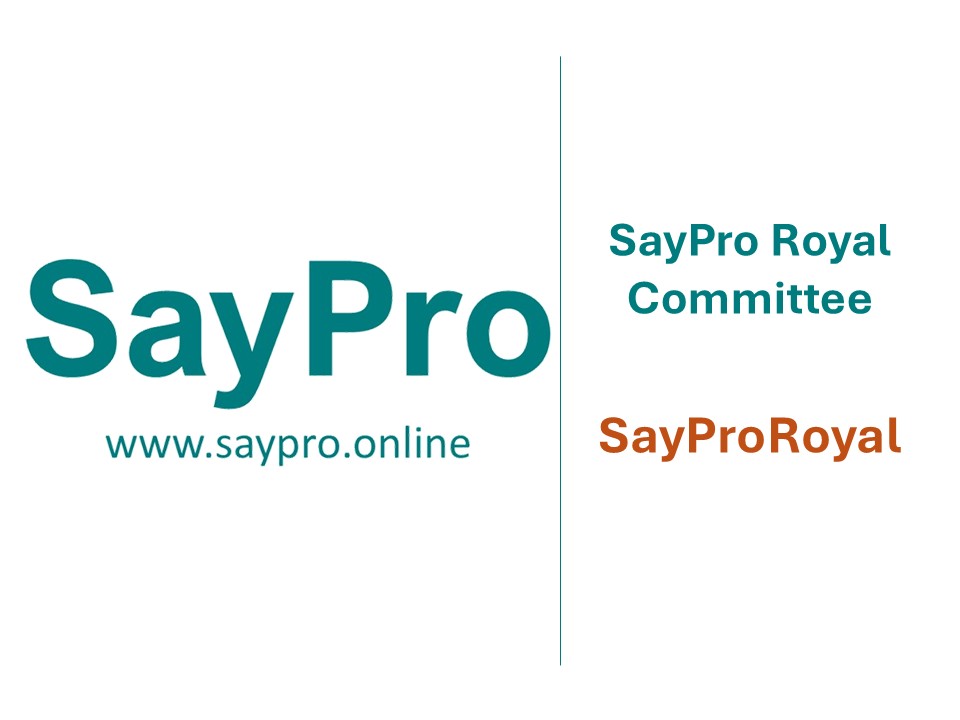
SayProP576-1-6-5 SayPro Chief Royal Committee
- List the TVET and University WIL Positions with the Link to the Advert as per SayPro000-5
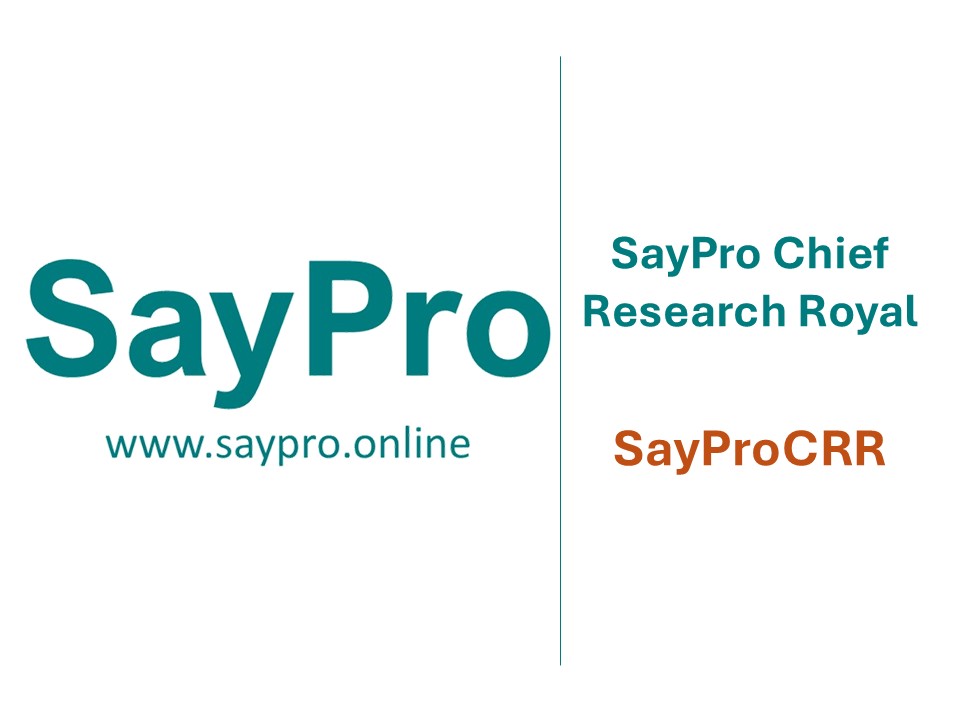
SayProP576-1-6-6 SayPro Chief Research Royal
- List the TVET and University WIL Positions with the Link to the Advert as per SayPro000-5
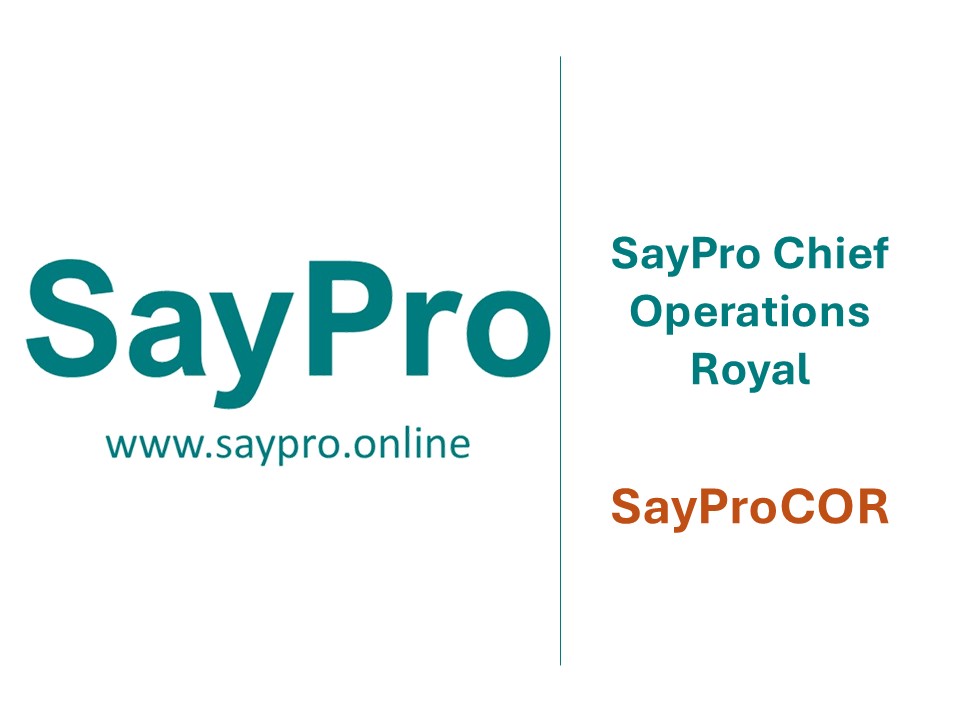
SayProP576-1-6-7 SayPro Chief Operations Royal
- List the TVET and University WIL Positions with the Link to the Advert as per SayPro000-5
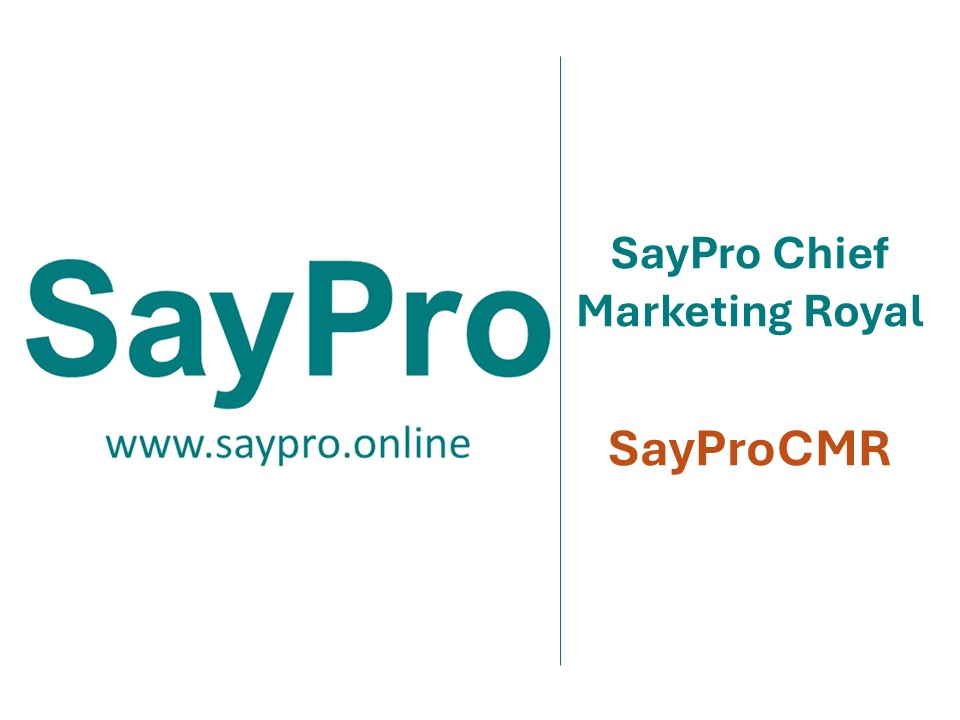
SayProP576-1-6-8 SayPro Chief Marketing Royal
- List the TVET and University WIL Positions with the Link to the Advert as per SayPro000-5
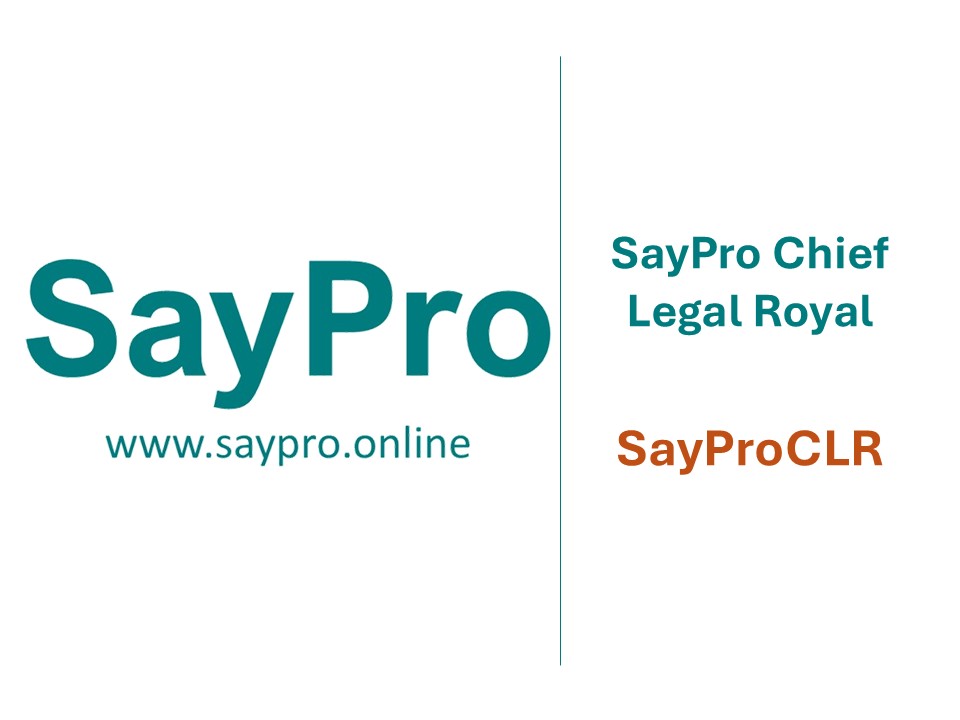
SayProP576-1-6-9 SayPro Chief Legal Royal
- List the TVET and University WIL Positions with the Link to the Advert as per SayPro000-5
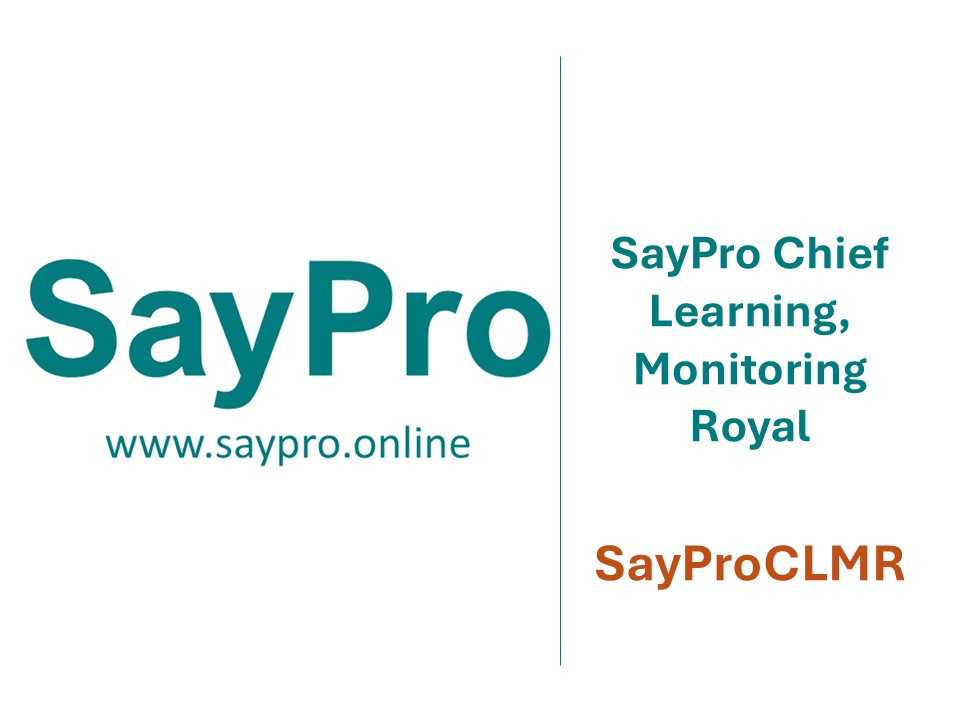
SayProP576-1-6-10 SayPro Chief Learning and Monitoring Royal
- List the TVET and University WIL Positions with the Link to the Advert as per SayPro000-5
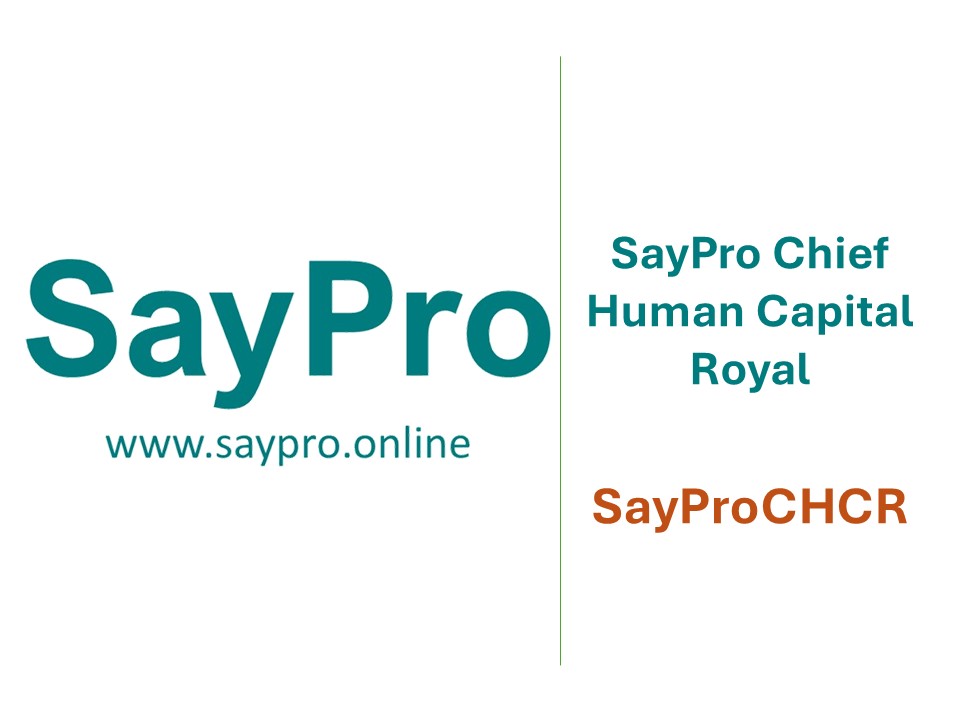
SayProP576-1-6- SayPro Chief
- SayPro Volunteer Management TVET College WIL Internr SayProCSHC-1A10
- SayPro Volunteer Management University College WIL Internr SayProCSHC-1A11
- SayPro University Graduate Internship Management TVET College WIL Intern SayProCSHC-2A10
- SayPro University Graduate Internship Management University WIL Intern SayProCSHC-2A11
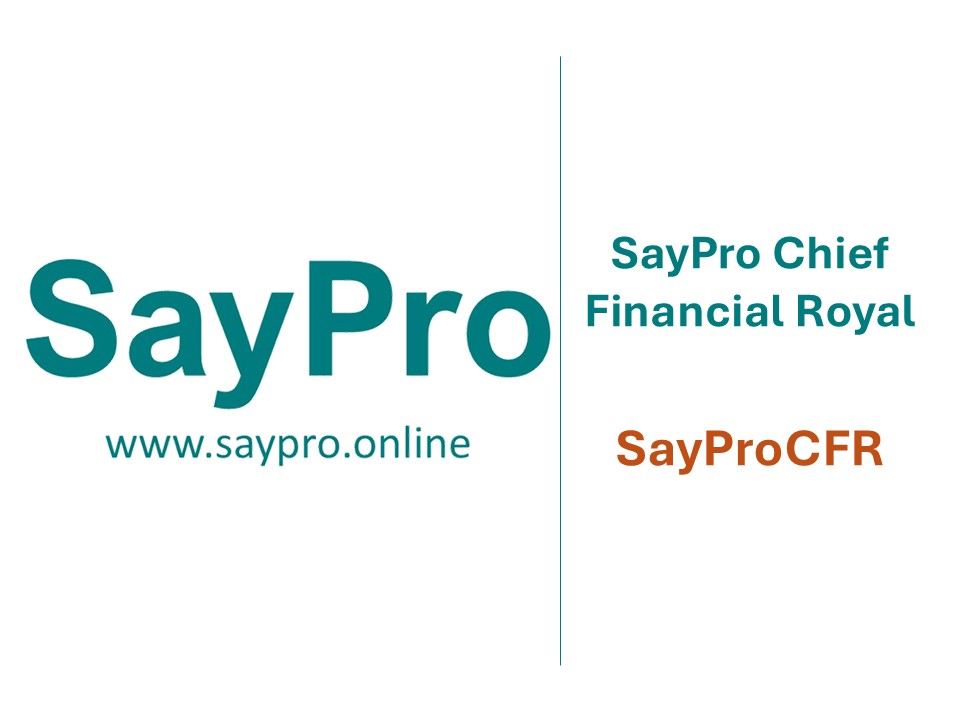
SayProP576-1-6- SayPro Chief
- List the TVET and University WIL Positions with the Link to the Advert as per SayPro000-5
6.2 Orientation
- Provide induction on SayPro values, policies, confidentiality, and expectations.
- Distribute WIL Logbook and Code of Conduct.
6.3 Placement and Supervision
- Participant is deployed within a Royal department.
- Weekly check-ins are held with mentors and WIL coordinators.
- Progress is logged and monitored through templates and checklists.
6.4 Evaluation and Reporting
- Mid-term and final evaluations are conducted.
- Academic supervisors are given access to progress reports if required.
- A completion certificate is issued at the end of the program.
7. Documentation and Templates
- WIL Application Form
- WIL Induction Checklist
- SayPro WIL Agreement Template
- WIL Logbook Template
- Weekly Progress Review Form
- WIL Completion Certificate Template
8. Compliance
SayPro adheres to the following guidelines:
- Skills Development Act, 1998
- Department of Higher Education & Training (DHET) WIL Framework
- SETA Learnership and WIL Compliance Regulations
- Quality Council for Trades and Occupations (QCTO) standards
Non-compliance with WIL procedures may result in dismissal of the participant or revocation of placement status.
9. Frequently Asked Questions (FAQs)
Q1: How long can a WIL placement last at SayPro?
A1: Duration depends on institutional requirements but typically ranges from 3 to 12 months.Q2: Is the WIL placement paid?
A2: It may be unpaid or stipended, depending on SayPro funding or the institution’s agreements.Q3: What if a participant fails to comply with SayPro policies?
A3: Disciplinary measures will apply and may result in termination of the placement.Q4: Can WIL participants be hired permanently?
A4: Yes, upon successful completion and based on vacancy availability and performance.Q5: Who monitors the WIL participants’ work?
A5: Assigned SayPro Officers and Royal Directors serve as mentors and supervisors.